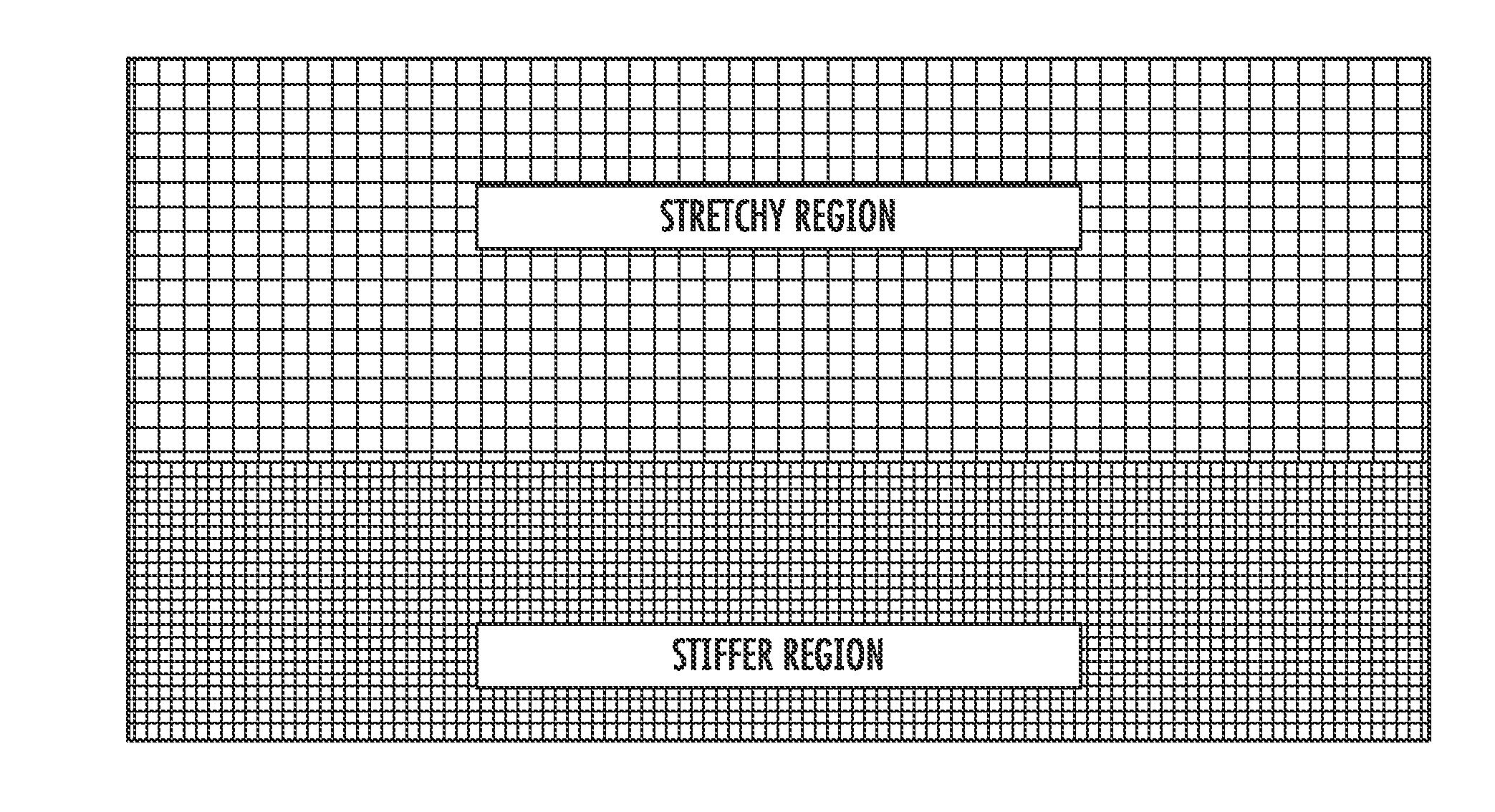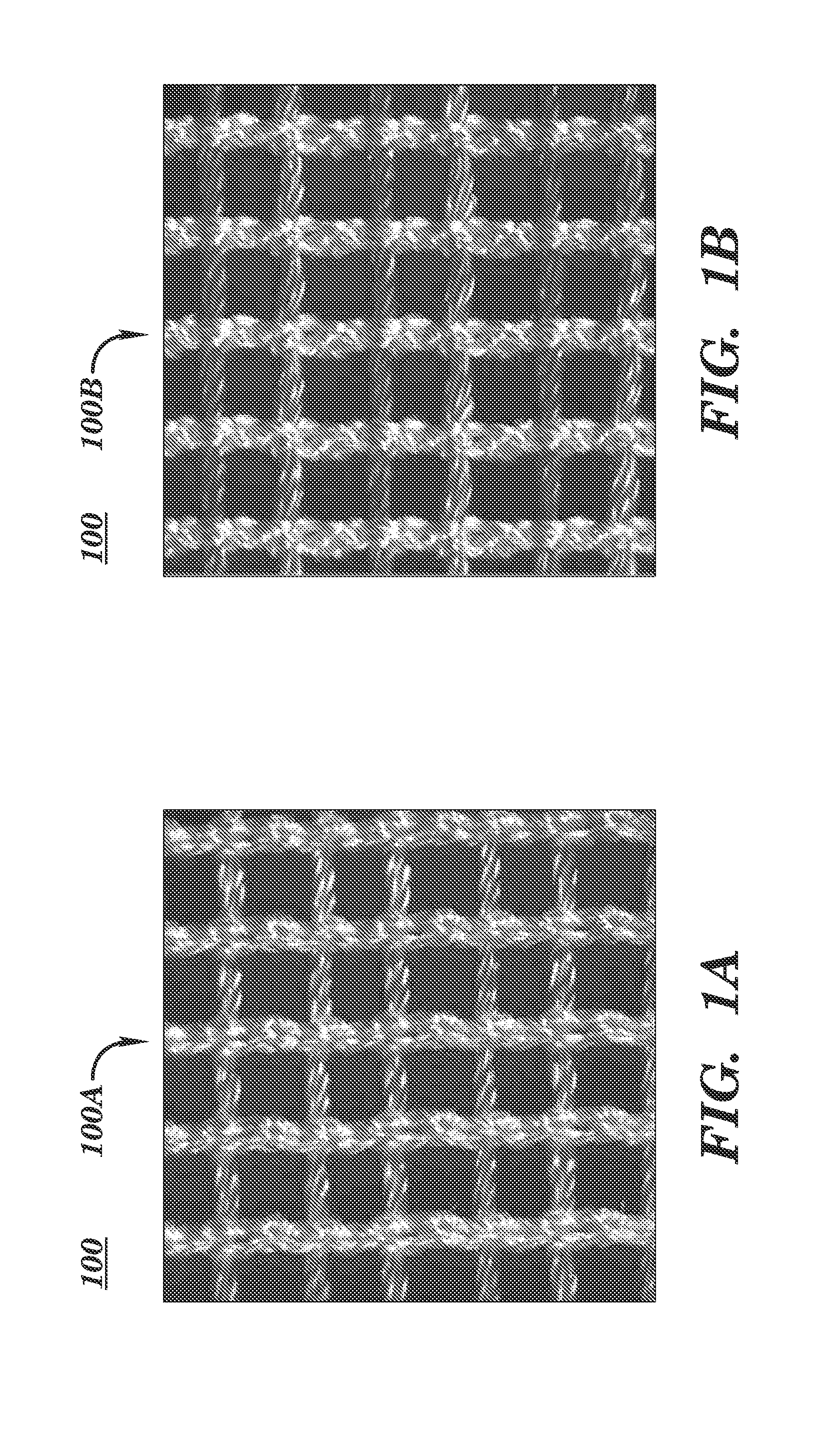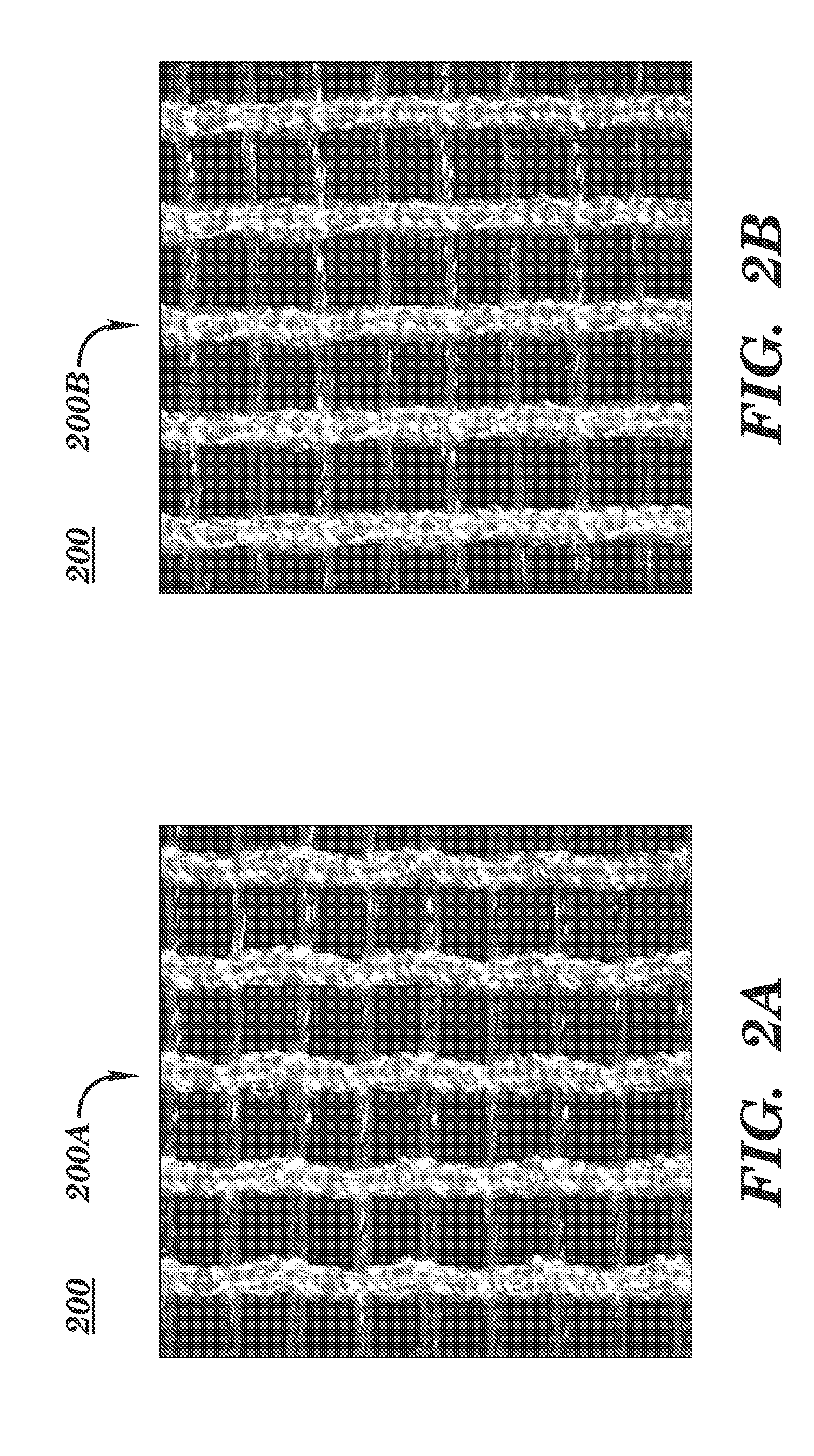Prosthetic device having regions of varying stretch and method of manufacturing the same
a technology of prosthetic devices and stretch bands, which is applied in the field of surgical silk mesh devices, can solve the problems of scar encapsulation and tissue erosion, pain, and a variety of complications, and achieve the effect of reducing tissue erosion, fistulas, or adhesions
- Summary
- Abstract
- Description
- Claims
- Application Information
AI Technical Summary
Benefits of technology
Problems solved by technology
Method used
Image
Examples
Embodiment Construction
[0106]Embodiments according to aspects of the present invention provide a biocompatible surgical silk mesh device for use in soft or hard tissue repair. Examples of soft tissue repair include breast reconstruction, hernia repair, rotator cuff repair, cosmetic surgery, implementation of a bladder sling, or the like. Examples of hard tissue repair, such as bone repair, involve reconstructive plastic surgery, ortho trauma, or the like.
[0107]Advantageously, the open and porous structure of these embodiments allows tissue in-growth while the mesh bioresorbs at a rate which allows for a smooth transfer of mechanical properties to the new tissue from the silk scaffold. It also allows tissue in-growth along the open pore area as well as the scaffold area. Furthermore, embodiments employ a knit pattern that substantially prevents unraveling under tension, especially when the mesh device is cut such as by a surgeon. In particular, embodiments may preserve the stability of the mesh device by e...
PUM
 Login to View More
Login to View More Abstract
Description
Claims
Application Information
 Login to View More
Login to View More - R&D
- Intellectual Property
- Life Sciences
- Materials
- Tech Scout
- Unparalleled Data Quality
- Higher Quality Content
- 60% Fewer Hallucinations
Browse by: Latest US Patents, China's latest patents, Technical Efficacy Thesaurus, Application Domain, Technology Topic, Popular Technical Reports.
© 2025 PatSnap. All rights reserved.Legal|Privacy policy|Modern Slavery Act Transparency Statement|Sitemap|About US| Contact US: help@patsnap.com



